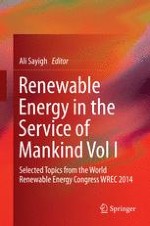2015 | OriginalPaper | Chapter
83. Coupling Floating Wind Turbines with Large- Scale Air-Conditioning Systems Through Deep Sea Water Pumping: Case Studies of System Performance in European Deep Waters
Authors : Tonio Sant, Robert N. Farrugia, David Arroyo López-Carro
Published in: Renewable Energy in the Service of Mankind Vol I
Publisher: Springer International Publishing
Activate our intelligent search to find suitable subject content or patents.
Select sections of text to find matching patents with Artificial Intelligence. powered by
Select sections of text to find additional relevant content using AI-assisted search. powered by
